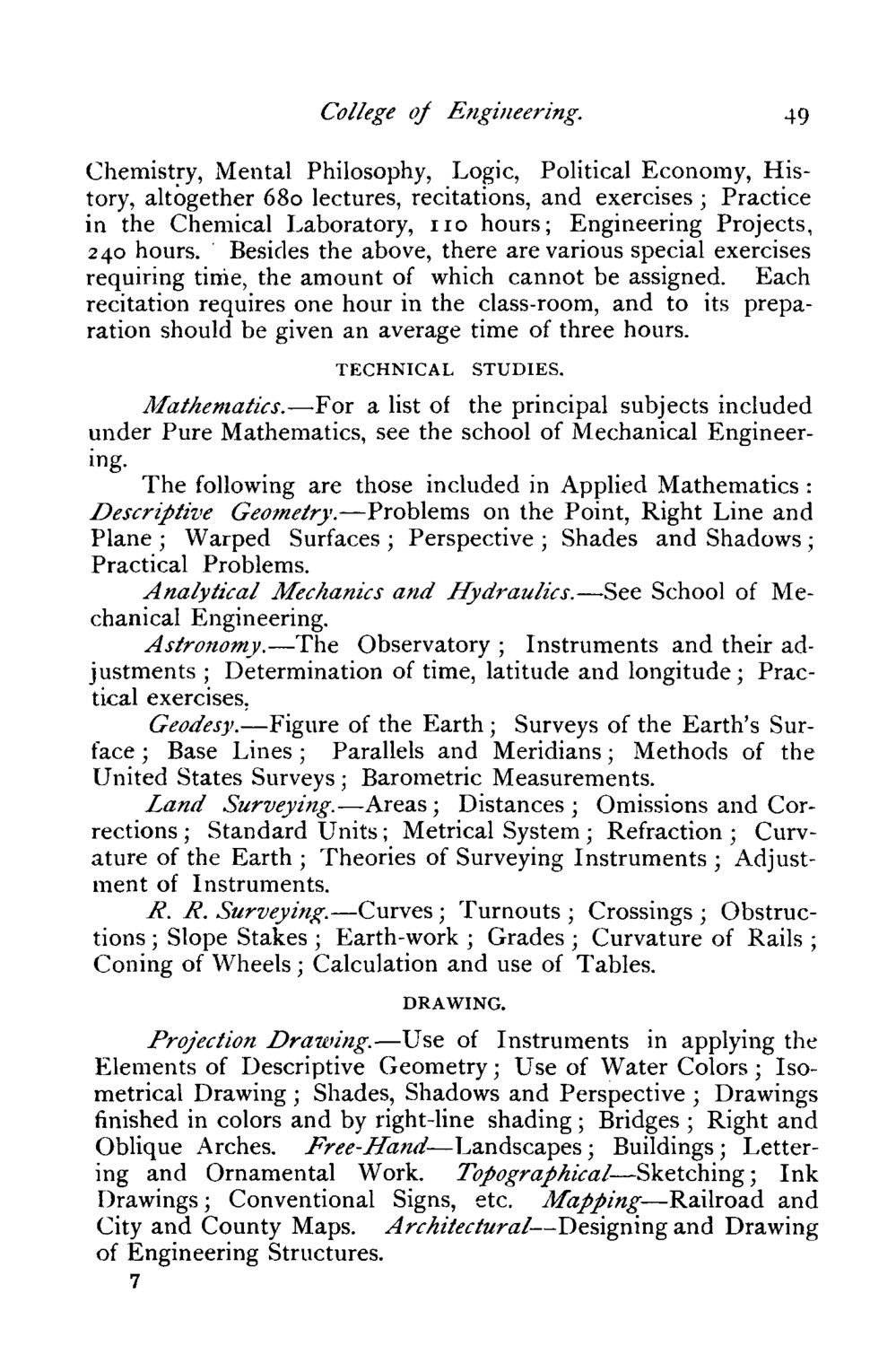| |
| |
Caption: Course Catalog - 1878-1879
This is a reduced-resolution page image for fast online browsing.

EXTRACTED TEXT FROM PAGE:
College of Engineering. 49 Chemistry, Mental Philosophy, Logic, Political Economy, History, altogether 680 lectures, recitations, and exercises ; Practice in the Chemical Laboratory, n o hours; Engineering Projects, 240 hours. Besides the above, there are various special exercises requiring time, the amount of which cannot be assigned. Each recitation requires one hour in the class-room, and to its preparation should be given an average time of three hours. TECHNICAL STUDIES. Mathematics.—-For a list of the principal subjects included under Pure Mathematics, see the school of Mechanical Engineering. The following are those included in Applied Mathematics : Descriptive Geometry.—Problems on the Point, Right Line and Plane ; Warped Surfaces ; Perspective ; Shades and Shadows ; Practical Problems. Analytical Mechanics and Hydraulics.—See School of Mechanical Engineering. Astronomy.—The Observatory ; Instruments and their adjustments ; Determination of time, latitude and longitude; Practical exercises. Geodesy.—Figure of the Earth; Surveys of the Earth's Surface ; Base Lines; Parallels and Meridians; Methods of the United States Surveys ; Barometric Measurements. Land Surveying.—Areas; Distances; Omissions and Corrections ; Standard Units; Metrical System ; Refraction ; Curvature of the Earth ; Theories of Surveying Instruments ; Adjustment of Instruments. R. R. Surveying.—Curves; Turnouts ; Crossings ; Obstructions ; Slope Stakes ; Earth-work ; Grades ; Curvature of Rails ; Coning of Wheels; Calculation and use of Tables. DRAWING. Projection Drawing.—Use of Instruments in applying the Elements of Descriptive Geometry; Use of Water Colors; Isometrical Drawing ; Shades, Shadows and Perspective ; Drawings finished in colors and by right-line shading; Bridges ; Right and Oblique Arches. Free-Hand—Landscapes; Buildings; Lettering and Ornamental Work. Topographical—Sketching; Ink Drawings; Conventional Signs, etc. Mapping—Railroad and City and County Maps. Architectural—Designing and Drawing of Engineering Structures.
| |